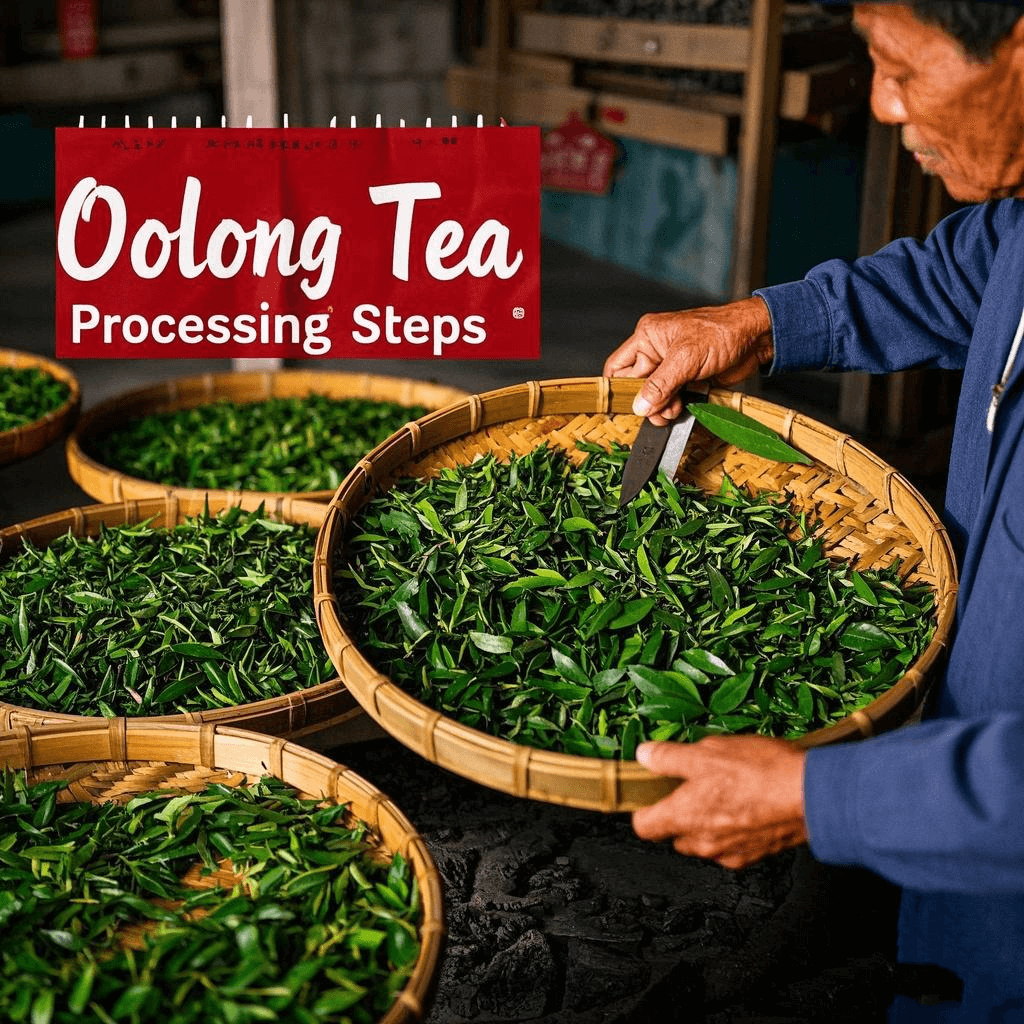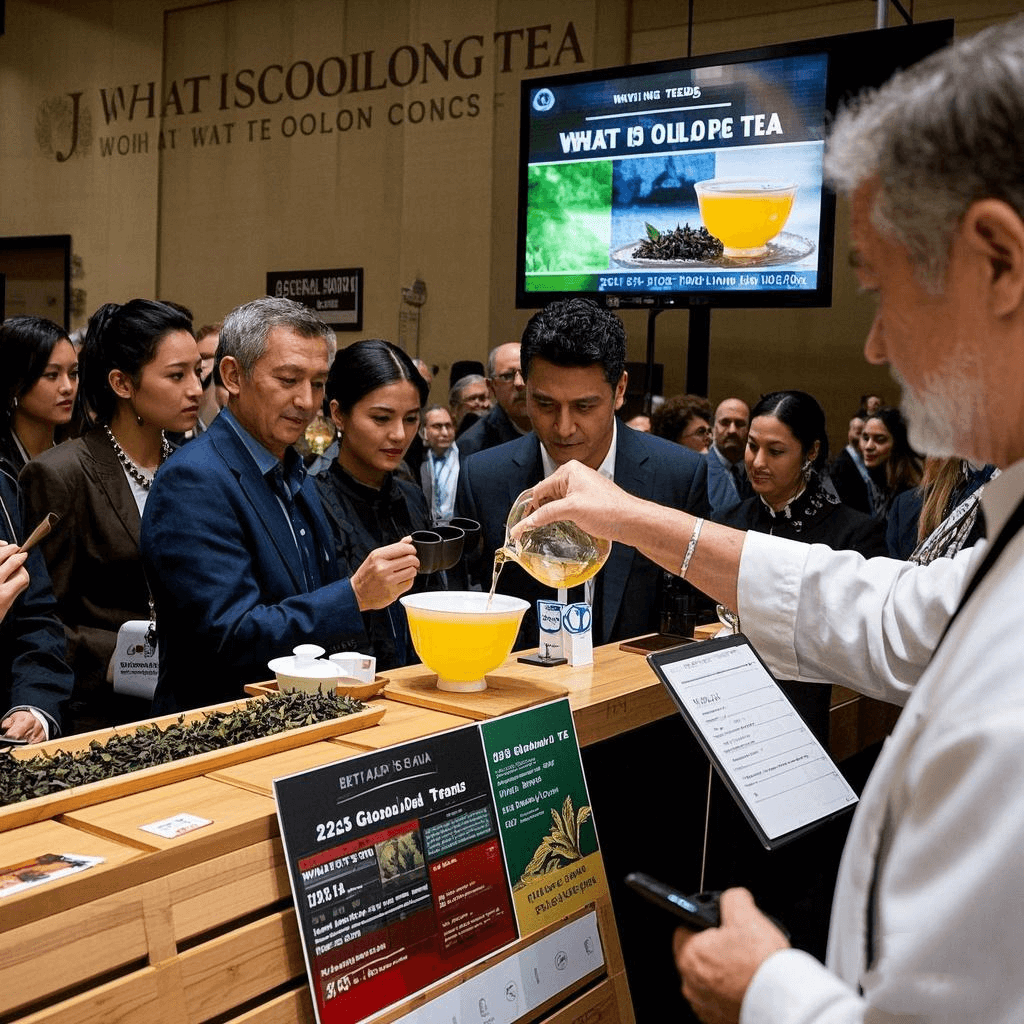In the ever-evolving world of specialty teas, a centuries-old brew is capturing the attention of drinkers worldwide: oolong tea. If you’ve found yourself wondering, what is oolong tea and why it’s suddenly gracing menus in trendy cafes and premium tea shops, you’re not alone. This semi-oxidized tea, steeped in Chinese heritage, is experiencing a global resurgence—driven by its complex flavors, health benefits, and the cultural curiosity it inspires. Let’s dive into the story of oolong tea, exploring its origins, unique characteristics, and the reasons behind its rising fame.
1. What Is Oolong Tea? A Journey Through Its Origins and Craft
At its core, answering what is oolong tea begins with understanding its place in the tea family. Oolong tea is a semi-oxidized tea, falling between unoxidized green tea and fully oxidized black tea on the processing spectrum. This middle ground gives oolong its distinct personality—capable of ranging from light, floral, and refreshing to deep, toasty, and robust, depending on how it’s crafted.
The Birthplace of Oolong Tea
The story of oolong tea begins in the mist-shrouded mountains of Fujian Province, China, during the 16th century. Legend has it that a tea farmer named Wu Liang (or “Oolong”) discovered the tea by accident, delaying the processing of fresh leaves, which led to partial oxidation and a new flavor profile. While the legend varies, the name “oolong”—translating to “black dragon”—is said to honor this serendipitous discovery.
Today, oolong tea production has expanded beyond Fujian to regions like Taiwan, where high-mountain oolongs have become internationally renowned. Each terroir imparts unique characteristics:
- Wuyi Mountain, Fujian: Home to rock teas (Yancha) like Da Hong Pao, known for their minerality and bold, roasted flavors.
- Anxi County, Fujian: The birthplace of Tieguanyin (Iron Goddess of Mercy), a classic oolong with floral notes and a creamy mouthfeel.
- Taiwan’s High Mountains: Producers of delicate, high-altitude oolongs like Alishan and Dongfang Meiren (Oriental Beauty), celebrated for their fruity and honeyed tones.
The Art of Oolong Tea Processing
What sets oolong tea apart is its meticulous processing, a blend of science and art:
- Withering: Fresh leaves are spread out to lose moisture, softening them for the next steps.
- Shaking (Tossing): Leaves are gently shaken in bamboo baskets to damage the edges, triggering oxidation.
- Oxidation Control: Artisans monitor oxidation levels, stopping the process at the desired point—ranging from 10% to 80%.
- Fixing: Heat is applied (via pan-frying or baking) to halt oxidation.
- Shaping and Drying: Leaves are rolled, twisted, or curled into their characteristic forms and dried for preservation.

This complex process explains why answering what is oolong tea can be so nuanced—each step influences the final flavor, aroma, and appearance, making oolong one of the most diverse tea categories.
2. Why Is Oolong Tea Gaining Global Popularity? Cultural Crossroads and Market Trends
The question of what is oolong tea has found a global audience, and its rising popularity stems from a confluence of cultural, culinary, and wellness trends.
A Bridge Between Eastern and Western Culinary Worlds
Oolong tea’s versatility has made it a darling of the global food and beverage industry:
- Cocktail Culture: Mixologists worldwide are using oolong as a base for sophisticated cocktails. Its complex flavors pair well with spirits—for example, a Da Hong Pao old-fashioned or a Tieguanyin gin fizz.
- Gourmet Cuisine: Top restaurants feature oolong in both savory and sweet dishes. Think oolong-smoked duck, tea-infused chocolate truffles, or even oolong tea ice cream.
- Coffee Shop Appeal: As consumers seek alternatives to coffee, oolong’s moderate caffeine content (30–50mg per 8oz cup) offers a balanced energy boost, making it a popular choice for afternoon pick-me-ups.
The Wellness Movement’s New Darling
In an era where health-conscious consumers prioritize functional foods and beverages, oolong tea’s potential benefits have put it in the spotlight:
- Antioxidant Rich: Oolong contains a unique blend of polyphenols, including catechins and theaflavins, which act as antioxidants. A study in Healthline notes these compounds may support heart health and cellular wellness.
- Metabolism Support: Research suggests that the combination of caffeine and polyphenols in oolong may aid in weight management by boosting metabolism and fat oxidation.
- Mindful Ritual: The gongfu cha (kung fu tea) ceremony, a traditional way of brewing oolong in small pots, has gained traction as a form of mindfulness, appealing to those seeking intentional daily practices.
Digital Age Discovery and Cultural Appreciation
The internet has played a pivotal role in spreading the word about what is oolong tea:
- Social Media Storytelling: Platforms like Instagram and TikTok showcase the vibrant colors and intricate brewing rituals of oolong, captivating visual audiences.
- Specialty Tea Communities: Online forums and YouTube channels dedicated to tea education have demystified oolong, making it accessible to newcomers.
- Artisanal and Sustainable Sourcing: Consumers increasingly value transparency and sustainability. Oolong producers who highlight ethical farming practices and small-batch production resonate with this demand.

3. Oolong Tea Benefits: Beyond Flavor to Functional Wellness
While the answer to what is oolong tea often starts with its taste, its benefits extend far beyond flavor. Let’s explore the wellness factors contributing to its global appeal.
Scientifically Backed Health Advantages
- Heart Health Support: Studies suggest that the flavonoids in oolong tea may help lower LDL cholesterol and improve blood vessel function. The antioxidants in oolong can also reduce inflammation, a key factor in heart disease.
- Blood Sugar Regulation: Some research indicates that oolong may improve insulin sensitivity, helping the body use glucose more efficiently. This has led to interest in oolong as a supportive beverage for those managing blood sugar levels.
- Mental Clarity and Relaxation: Oolong contains a unique combination of caffeine and L-theanine, an amino acid that promotes relaxation without drowsiness. This pairing provides a focused alertness, making it ideal for productivity without the jitters.
Consumer Testimonials and Cultural Wisdom
Beyond scientific studies, generations of tea drinkers in China and Taiwan have long valued oolong for:
- Digestive Comfort: Traditional wisdom holds that a cup of oolong after a meal can aid digestion, a belief that aligns with modern research suggesting it may stimulate gastric juices.
- Skin Health: The antioxidants in oolong are thought to support skin health by fighting free radicals, contributing to a more radiant complexion.
- Holistic Wellness: In Chinese medicine, oolong is seen as a balancing beverage, believed to harmonize the body’s energies—a concept that resonates with holistic health seekers worldwide.
4. Oolong Tea vs. Green Tea vs. Black Tea: Understanding the Differences
To truly grasp what is oolong tea, it’s helpful to compare it to its better-known cousins: green tea and black tea.
| Aspect | Oolong Tea | Green Tea | Black Tea |
| Oxidation Level | 10–80% partial | Unoxidized (0–10%) | Fully oxidized (80–100%) |
| Flavor Profile | Diverse: floral, fruity, toasty, earthy | Grassiness, vegetal, fresh | Bold, malty, robust, sometimes sweet |
| Caffeine Content | 30–50mg per 8oz cup | 20–45mg per 8oz cup | 40–70mg per 8oz cup |
| Antioxidant Type | Mixture of catechins and theaflavins | High in catechins (e.g., EGCG) | Rich in theaflavins and thearubigins |
| Processing Key | Partial oxidation controlled manually | Heat-treated to prevent oxidation | Fully oxidized, often with rolling |
What Makes Oolong Unique?
- Flavor Versatility: Oolong’s wide oxidation range allows for an unparalleled variety of flavors, making it suitable for both casual drinkers and connoisseurs.
- Brewing Rituals: The gongfu cha method, popular with oolong, emphasizes multiple short steeps, revealing evolving flavors—a practice less common with green or black tea.
- Cultural Significance: Oolong occupies a special place in Chinese and Taiwanese tea culture, often served in formal settings and family gatherings, giving it a symbolic importance beyond a mere beverage.
5. How to Choose and Brew Oolong Tea: A Guide for Beginners and Enthusiasts
Now that you understand what is oolong tea and why it’s beloved, here’s how to start your oolong journey.
Choosing the Right Oolong Tea
- Start with Flavor Preferences:
- Light and Floral: Try Taiwanese Alishan High Mountain Tea or Anxi Tieguanyin.
- Toasty and Robust: Opt for Wuyi Rock Teas like Shui Jin Gui (Golden Water Turtle) or Da Hong Pao.
- Fruity and Complex: Explore Phoenix Dan Cong (Single Bush) oolongs from Guangdong or Taiwan’s Dongfang Meiren.
- Source Quality: Look for teas labeled with their origin and processing method. Reputable sellers will provide details like harvest date and oxidation level. Discover the authentic taste of oolong tea with our premium selection, sourced directly from trusted farms.
The Art of Brewing Oolong Tea
For the best experience, follow these brewing tips:
- Gongfu Cha (Kung Fu Tea) Method (Traditional):
- Tools: Use a small Yixing clay teapot or gaiwan (lidded bowl). Shop handcrafted oolong teaware to enhance your brew for an authentic experience.
- Leaf Quantity: Fill the pot 1/3 to 1/2 with loose oolong leaves.
- Water Temperature: 195–205°F (90–96°C) for most oolongs; slightly cooler for delicate high-mountain varieties, hotter for roasted types.
- Steeping: Rinse the leaves with hot water to wake them up, then steep for 10–15 seconds for the first brew, increasing steeping time slightly for each subsequent infusion (oolong can be steeped 6–10 times).
- Western-Style Brewing (Casual):
- Use a teapot or mug: Add 1 tsp of oolong per 8oz of water.
- Steep for 2–3 minutes: Avoid over-steeping to prevent bitterness.
- Re-steep: Oolong leaves are durable—enjoy 2–3 steeps from the same leaves.
Enhancing Your Experience
- Pairing: Serve oolong with light snacks like nuts, fresh fruit, or mild cheeses to complement its flavors.
- Mindfulness: Take time to appreciate the aroma, color, and taste—let the brewing process become a moment of calm in your day.
- Learn from Experts: Brew oolong tea like a pro with our expert tools and guides, which include tips on mastering different oolong varieties.
6. Conclusion: The Timeless Allure of Oolong Tea in a Modern World
As we’ve uncovered, the answer to what is oolong tea is as rich and complex as the brew itself—a beverage steeped in history, crafted with artistry, and now embraced globally for its flavor, wellness benefits, and cultural significance. From its origins in the misty mountains of China to trendy cafes in New York or Tokyo, oolong tea has transcended its traditional roots to become a symbol of mindful consumption and culinary exploration.
Whether you’re drawn to its potential health benefits, intrigued by its diverse flavor profiles, or seeking a new ritual to enrich your daily life, oolong tea offers something unique. Its rise in popularity is a testament to its ability to bridge ancient wisdom with modern tastes, proving that some traditions only grow more relevant with time.
So, if you’ve been wondering what is oolong tea and why it’s capturing the world’s attention, there’s no better time to try it for yourself. Learn more about the origins of oolong tea from Wuyi Mountain and discover the perfect oolong to suit your palate. In every cup, you’ll find not just a beverage, but a journey through centuries of tradition, craftsmanship, and the simple joy of a well-brewed tea.

Pingback: What Does Oolong Tea Taste Like? Uncover Flavor Profiles & Pairings
Pingback: Decode Oolong Tea Translation: Cultural Meaning & Global Impact